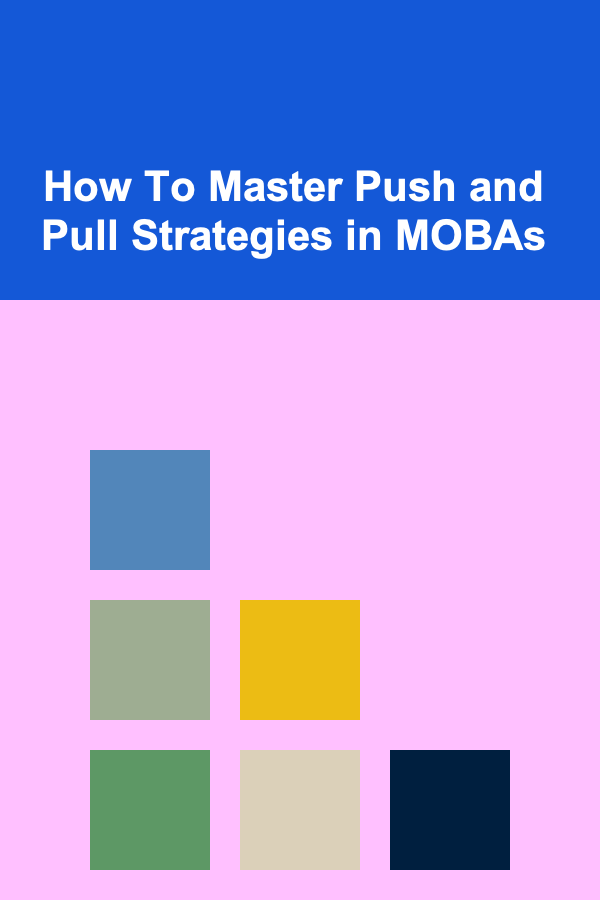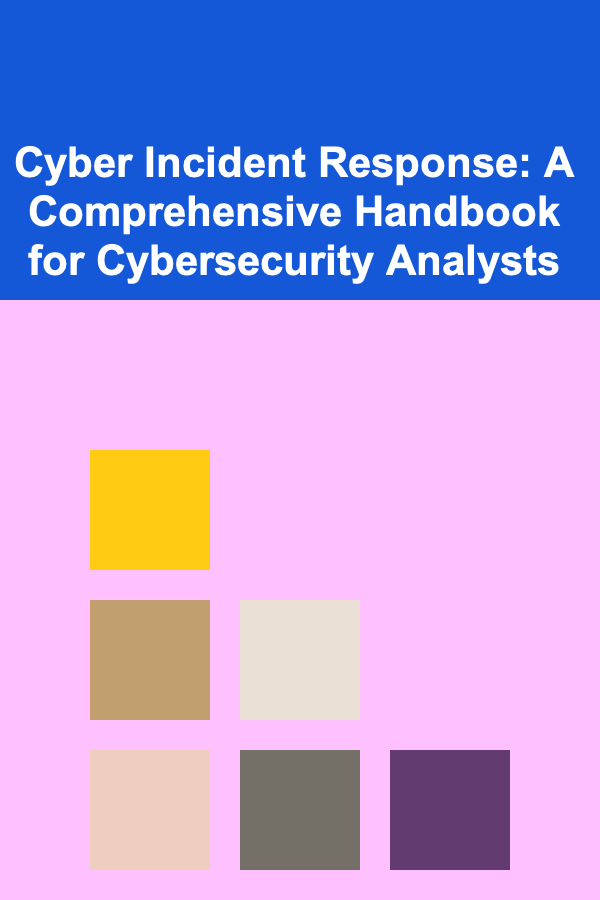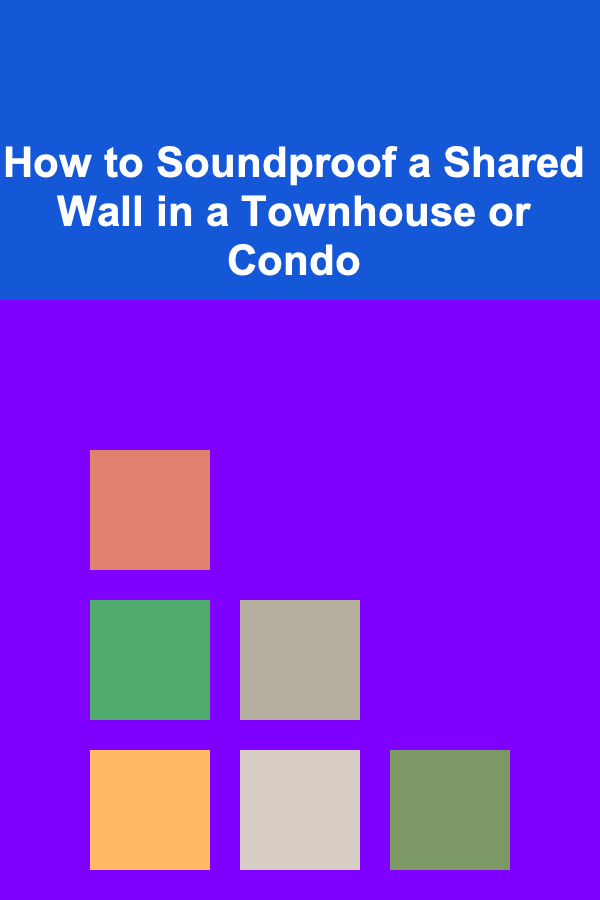
How To Master Push and Pull Strategies in MOBAs
ebook include PDF & Audio bundle (Micro Guide)
$12.99$10.99
Limited Time Offer! Order within the next:

Multiplayer Online Battle Arenas (MOBAs) are one of the most dynamic and challenging genres in the gaming world. The strategic depth and team-based coordination in these games are what make them both rewarding and difficult to master. A crucial aspect of competitive MOBAs revolves around understanding and executing "push" and "pull" strategies, which influence the pace of the game and can determine the outcome of team fights, objectives, and ultimately the victory.
In this article, we'll delve into the intricacies of push and pull strategies in MOBAs. We'll explore what these strategies are, how they can be applied, and how players and teams can master them for optimal performance. Whether you're new to MOBAs or an experienced player looking to refine your tactics, this guide will provide valuable insights into how you can use push and pull strategies to gain an edge over your opponents.
Understanding Push and Pull Strategies
Before we dive deeper into how to master push and pull strategies, it's important to define what these terms mean in the context of a MOBA.
Push Strategy
A push strategy refers to the act of advancing your team's minion waves towards the enemy's towers and base structures. The goal is to "push" the lane by continually applying pressure to your opponent's defenses. In MOBAs like League of Legends , Dota 2 , and Smite, minion waves naturally push forward when the player doesn't interfere with them, but players can accelerate this process by clearing the enemy's waves faster, positioning their heroes strategically, and using specific abilities to enhance wave-clear.
The primary purpose of pushing is to create map pressure, forcing your enemies to defend their towers rather than roam or focus on other objectives. Pushing can lead to taking down turrets, gaining map control, securing vision, and creating opportunities to contest key objectives such as dragons or Roshan.
Pull Strategy
On the flip side, a pull strategy involves manipulating the movement of both minion waves and enemy players to your advantage. Pulling can be used in different ways, but it typically involves dragging the minion waves or enemies away from their expected course to gain an advantage.
One form of pulling in MOBAs is when players use their abilities or positioning to pull or manipulate the enemy's minion wave, either pulling it towards their own tower or pulling it away from the lane to deny resources to their enemies. Pulling can also refer to strategic disengagement, where players "pull" their opponents into unfavorable positions or choke points, setting up advantageous team fights.
Push vs. Pull
The dynamics between push and pull can be seen as two sides of the same coin. A push strategy applies pressure by advancing, while a pull strategy seeks to disrupt that pressure or redirect it. Successful teams often use a combination of both, pushing lanes when the time is right while pulling enemies into traps, ambushes, or unfavorable situations to keep the opposition on the defensive.
Key Concepts for Mastering Push and Pull Strategies
To master push and pull strategies, players need to focus on several key concepts and tactical elements. Understanding these principles and knowing when to execute them can make a world of difference in a game.
1. Wave Control and Manipulation
Wave control is at the heart of both pushing and pulling strategies. By manipulating the waves of minions, players can dictate the flow of the game. A well-timed push can apply pressure, while pulling or freezing the wave can deny the enemy the resources they need to progress.
- Push: When you clear an enemy wave quickly and shove your wave towards the enemy's tower, you are pushing. The goal is to make it difficult for the opponent to last-hit, and to either force them to use their abilities to clear the wave or lose resources.
- Pull: Pulling the minion wave towards your tower is often used to ensure that the enemy struggles to last-hit. This can also create opportunities for you to set up ganks by freezing the wave near your tower, where your opponent is at risk of being ganked.
Players can use their champion's abilities to help clear or deny waves. Champions like Zed or Yasuo in League of Legends are particularly good at pushing waves quickly, while heroes with crowd control (CC) abilities like Crystal Maiden or Naga Siren can pull enemies or minions into advantageous positions.
2. Map Awareness and Vision Control
Map control is one of the biggest factors in determining when to push and when to pull. Having vision of key areas on the map can help you understand when an enemy is vulnerable to ganks, when a turret is weak enough to push, or when you can safely engage in an objective.
- Push: When you push, you are typically exposing yourself to potential threats, such as enemy rotations or jungle invades. Vision control, such as placing wards in strategic locations, allows you to keep track of where the enemies are, preventing them from catching you off guard.
- Pull: Pulling or manipulating minion waves works best when you can create a trap by positioning in such a way that the enemy is lured into a dangerous area. Having vision in the enemy jungle or on critical objectives, such as dragons or buffs, can help you pull enemies into areas where your team has an advantage.
3. Objective Control
Push and pull strategies play a significant role in objective control. Objectives like towers, dragons, and neutral creeps can tilt the balance of a game in your favor. By mastering when to push or pull, you can secure these objectives more effectively.
- Push: Pushing waves efficiently allows you to apply pressure on objectives. Taking down towers, in particular, is crucial for expanding your team's map control. Once a tower falls, the enemy has fewer resources available, and it opens up the opportunity to take other objectives or invade the enemy jungle.
- Pull: Pulling can be used to contest objectives or deny the enemy's progress on objectives. If your opponent is preparing for an objective, such as the dragon or Baron, you can pull them into a position where they are less able to contest or delay the objective.
Controlling objectives with a combination of pushing and pulling ensures that your team can consistently stay ahead, even if you aren't directly engaging in fights.
4. Timing and Coordination
Pushing and pulling are not just about individual actions but are deeply dependent on team coordination and timing. Mastering these strategies requires knowing when to push as a unit, when to split-push, and when to pull the enemy team into traps.
- Push: Successful pushing often requires synchronization with your team. If everyone on your team is pushing in the same direction, it creates immense pressure. However, if one or two players are out of sync, it can leave them vulnerable to counterattacks.
- Pull: Coordinating pulls requires precise timing. If your team can successfully pull the enemy into a fight in a disadvantageous position, it can turn the tide of the game. A pull can also be effective in setting up flanks or baiting the enemy into an unfavorable team fight.
5. Counterplay and Adaptation
Mastering push and pull strategies also means learning how to counter your opponent's strategies. If your opponent is consistently pushing, you'll need to adapt by pulling or freezing the wave, forcing them to over-extend or become predictable. Conversely, if they're trying to pull your waves, you'll need to outmaneuver them or use your own abilities to break the pull.
Understanding the strengths and weaknesses of each champion in a game and adapting your push and pull strategies accordingly will give you a significant advantage.
Advanced Tactics for Mastering Push and Pull
After understanding the fundamental concepts of push and pull, the next step is to incorporate more advanced tactics into your playstyle.
1. Split Pushing
Split pushing is a strategy in which one or more players push a side lane while the rest of the team focuses on other objectives or fights. The goal is to pressure multiple lanes simultaneously, forcing the enemy team to divide their attention.
Split pushing requires excellent map awareness, and often relies on champions with high mobility or strong wave-clear potential. While pushing one lane, your team might create distractions or pull the enemy into another part of the map.
2. Baiting with Push and Pull
Baiting is an essential skill in MOBAs and works hand-in-hand with push and pull strategies. By pushing a lane and pretending to overextend, you can bait the enemy into a trap. Once they engage, you can pull them into your team's waiting ambush.
This requires not only good vision but also a well-timed communication strategy. If your team can execute the bait properly, it often results in a favorable team fight or an objective capture.
3. Shifting the Balance with Push and Pull
Mastering the shifting balance of push and pull strategies means knowing how to create opportunities in moments of vulnerability. After successfully pulling off a gank or taking an objective, you can push forward and apply pressure to multiple lanes.
However, pushing too far without vision or support can make you susceptible to counterattacks, and pulling without proper positioning can lead to missed opportunities. The key to balancing these strategies is to stay unpredictable and never commit to a single strategy for too long.
Conclusion
Push and pull strategies are vital to mastering MOBAs, as they directly influence lane management, map control, and objective acquisition. To effectively apply these strategies, players must have a deep understanding of wave manipulation, map awareness, timing, and team coordination. By combining push and pull with good vision control, objective prioritization, and advanced tactics like split pushing and baiting, players can outmaneuver their opponents and gain a significant advantage in competitive play.
Ultimately, mastering push and pull requires practice, adaptability, and an understanding of both your team's capabilities and your enemies' weaknesses. Whether you're playing League of Legends , Dota 2, or any other MOBA, developing these strategies will enhance your gameplay and contribute to your team's success.

Cyber Incident Response: A Comprehensive Handbook for Cybersecurity Analysts
Read More
How to Set Up Customer Accounts and Manage Orders on Shopify
Read More
How to Soundproof a Shared Wall in a Townhouse or Condo
Read More
How to Write Compelling Stories Behind Each Antique
Read More
Unlocking the Potential of Data-Driven Advertising with Performance Marketing Management
Read More
How To Discover Groundbreaking Female Hip-Hop Artists
Read MoreOther Products

Cyber Incident Response: A Comprehensive Handbook for Cybersecurity Analysts
Read More
How to Set Up Customer Accounts and Manage Orders on Shopify
Read More
How to Soundproof a Shared Wall in a Townhouse or Condo
Read More
How to Write Compelling Stories Behind Each Antique
Read More
Unlocking the Potential of Data-Driven Advertising with Performance Marketing Management
Read More